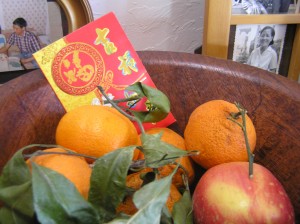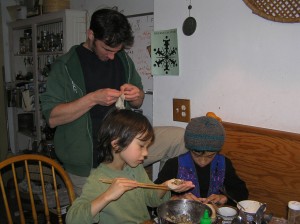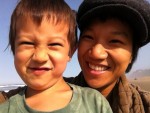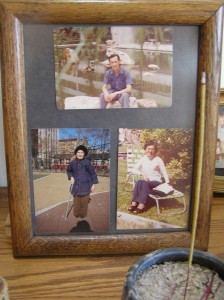Chinese New Year: Love and Gratitude
Posted By Min Yi on February 21, 2011

Chinese New Year is the holiday I remember celebrating most as a child. I would wear my nice clothes and go out to Chinatown with my mom and brother. We’d walk through the streets thronged with people, dragon dances and endless noise of fire crackers. We’d wait for what seemed like hours to get a table at the dim sum restaurants. The dragon dancers would come over to our table. My mom would give me a few dollars and “feed” it to the dragon, it would blink at me happily and move on to the next child.
My mom had her purse stuffed with red envelops “Lai see” as they were called — blessings with money inside. Sometimes it seemed bottomless, as she would hand them out to children of her friends whom she’d inevitably meet on the street sometime during the two week celebration. And as fast as she was handing them out, I would say ‘Gung Hay Fat Choy” (May you have wealth and abundance) and start to fill my pockets with “lai sees” from her friends. By the end of the day, we would be home and she would show me her deflated purse and say, “out of mine and into yours”. She’d laugh – we’d both laugh at the silliness of it all.
The foods we ate had so much meaning. Homophone foods, every dish name also had a corresponding name that meant something else… usually a blessing: wealth (black moss), rebirth (peanuts), peace (apples), prosperity (mandarin oranges), long life (green beans), high year (nain gao) and reunion (tong yoon). Packaged luck and good wishes in jiao zi (potstickers) is served to all. I remember some years when my mom and I would sit around the table and wrap jiao zis together. We didn’t argue about anything, just wrapped and wrapped.

The blessings around the food reminds me of Dr. Marasu Emotos’ study of water. The water that have been blessed with kind words and positive intentions form gorgeous crystals and patterns, but the water that was ignored or labeled with negative words became formless blobs. Perhaps there is something to saying blessings and positive thoughts.

This year, I decided to host a Chinese New Year Celebration with my friends in Eugene. I cleaned out things we no longer needed to make room for the new year. I taped Chinese couplets of blessings by the doors. I made traditional food, handed out lai sees and made an ancestral altar. We offered food to our ancestors and lit incense for them.
Since putting up the altar, the children and I have been able to look at our ancestors. I’d introduce them to family members they’ve never met, occassionally sharing a story or two. They’re always interested. Sometimes, when I walk by and catch a glimpse of a face, I’d stare for a long time, sometimes crying, sometimes smiling.
In the book, You’re One of Us! Systemic Insights and Solutions for Teachers, Students and Parents by Marianne Franke-Gricksch, the author shares accounts of students performing better in tests when asked to imagine a relative or ancestor standing or sitting beside them. When asked who they selected, it is never the one who is the good scholar, rather it is the person who would love them unconditionally no matter how they performed. Our ancestors are a source of love and life for us, whether we’ve met them or not, whether we know it or not.
I’m grateful for this holiday to help me remember my ancestors and to remind me they are smiling on me.


Comments